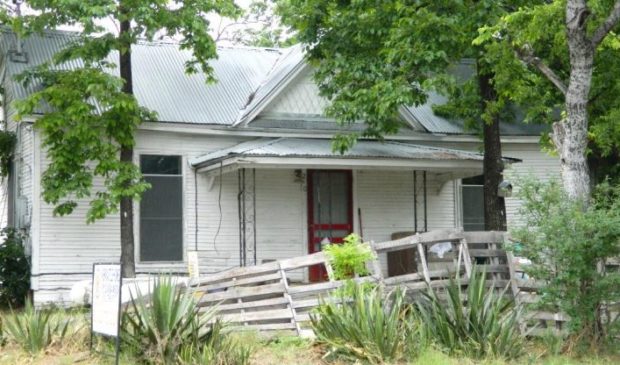Historic zoning debate reaches new heights at BoA
Tuesday, November 29, 2016 by
Elizabeth Pagano Are brand-new houses just as eligible for historic zoning as older homes? The answer may not surprise you: No, they are not.
The fact that this question was the subject of a half-hour discussion at the Board of Adjustment, however, is worthy of notice.
At the heart of the discussion was an unusual variance granted at 2100 E. 14th St. That variance, for a second house on the East Austin property, was contingent on the original house getting historic zoning. Two years later, that house is gone, and the question of what to do about the vestigial variance is complicated.
Last summer, the owner, 2100 E. 14 Ventures LLC, explained to the board that the remaining two walls of the original 1906 house had collapsed due to weather conditions. Though the owner presented plans to reconstruct the home, board members were unimpressed and seemed disinclined to grant a new variance to increase the allowed size of a second dwelling unit from 1,100 square feet to 1,356 square feet. They also expressed disbelief that a new house would, in fact, be historic.
That idea reappeared at the most recent meeting of the board. Carl Wren, an assistant director in the Development Services Department, told the board that he was informed by Historic Preservation Officer Steve Sadowsky that “a replica had as good an opportunity for historic zoning as the original house.”
“I didn’t know that until they told me,” he said.
Chair William Burkhardt was dubious. He said the fact that the house had since been demolished meant, to him, that it could not qualify for historic zoning.
“I would be stunned if the Historic Landmark Commission will grant historic certification to a contemporary construction,” said Burkhardt. “We are opening a Pandora’s box that is half as wide as the state with that.”
Indeed, Sadowsky confirmed to the Austin Monitor that the city would not endorse historic zoning (or the associated tax abatement) for a new house.
“That has never, ever been our position,” said Sadowsky. “I wrote two letters saying I cannot recommend a brand-new house as a historic landmark. That doesn’t make any sense.”
Sadowsky further explained that he had been against the historic zoning stipulation from the beginning, as landmark status was reserved for “extraordinary houses and buildings in the city.” He made the distinction between that zoning change and preservation of the existing house, which was the actual goal.
The issue will likely come up next month, because board members unanimously opted to postpone the case to their December meeting. Until then, Wren assured the board that staff would put a hold on a new Certificate of Occupancy and issue a stop work order, given that, as it stands now, board members seem to agree that the conditions of the variance have not been met.
Board Member Bryan King, who was a member of the board when the variance was originally granted, said that guarantees made to retain the house were not kept and that, to him, that was the issue.
“You get historic zoning, or you don’t get the variance,” said King. “That was pretty clear.”
Board Member Melissa Hawthorne further pointed out that when the original house fell down, the new house had not yet been framed, and there was ample opportunity to locate it in a place that would not require a variance.
“The whole reason that the variance on the back house was given was because of the front house,” said Hawthorne.
Board Member Brooke Bailey agreed, saying that she didn’t understand how the variance was still valid, either. “You don’t just get a variance because you let a house fall down,” she said.
Despite the seeming consensus on the dais, the conversation in December might prove to be interesting. An email from developer Newcastle Homes’ Lex Zwarun shows that he tried to withdraw the case in October under advice from Wren, given the fact that the board had issued a variance based on factors outside of the developer’s control (the historic zoning).
Zwarun continued, “(Wren) said if we complete the project, apply for HZ, and steve and/or the (Historic Landmark Commission) does not support it, he would ‘defend the CO.’ … we would not have done anything wrong since we would have fulfilled our obligation (re-create the lillie scott and apply for HZ) and would not be at fault for failing to get HZ since that is beyond our control.”
Photo of now-demolished house courtesy of the city of Austin.
The Austin Monitor’s work is made possible by donations from the community. Though our reporting covers donors from time to time, we are careful to keep business and editorial efforts separate while maintaining transparency. A complete list of donors is available here, and our code of ethics is explained here.
You're a community leader
And we’re honored you look to us for serious, in-depth news. You know a strong community needs local and dedicated watchdog reporting. We’re here for you and that won’t change. Now will you take the powerful next step and support our nonprofit news organization?











